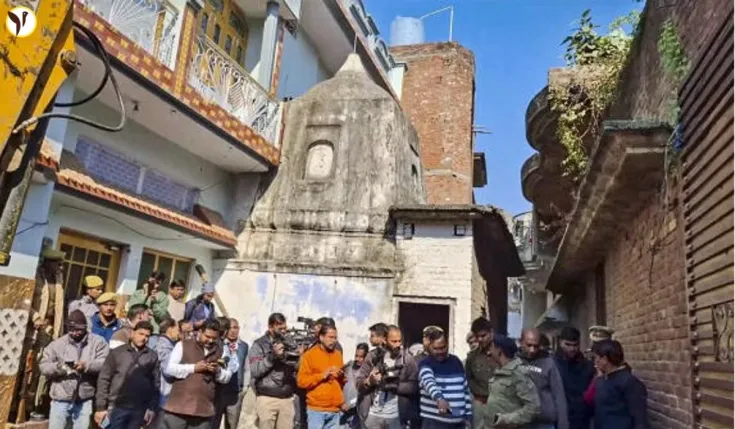In Sambhal, Uttar Pradesh, things have gotten pretty intense with this anti-encroachment drive happening. Some people who built their homes on land that supposedly belongs to a temple have started tearing down their own houses. They said it’s because if they wait for the government to do it, they’ll lose everything — their stuff, their valuables, basically. One resident told a reporter, “If we don’t do it ourselves, the administration will leave us with nothing.” So, it’s like they’re trying to save what they can before the officials move in.
The government hasn’t taken this lightly. They’ve put up CCTV cameras and sent a big police force to keep an eye on things and make sure the situation doesn’t get out of control. So, there’s this tense atmosphere as both sides watch each other closely.
Power Theft Raids Are Ongoing
At the same time, the local electricity company is cracking down on power theft. They’ve been doing raids all over the area, and it’s not just regular people — even the house of a local politician, MP Zia-Ur Rahman, got one of those smart meters installed after some illegal building claims came up.
The officials say they’ve caught a lot of houses stealing electricity, and they’ve fined people a lot — over ₹1.3 crore in total so far. Because of all this, police are also there to protect the electricity department staff while they do their checks. It feels like they’re really trying to clean up the area on multiple fronts.
Ancient Temple Found and Reopened
One surprising thing that came up during the whole anti-encroachment process was the rediscovery of an old Shiva temple called Shri Kartik Mahadev Temple, or Bhasma Shankar temple. Apparently, it’s been locked up and hidden since 1978. The temple has an idol of Lord Hanuman and a Shivling, along with some other old artifacts. They even found three broken idols in a well near the mosque entrance when they dug around.
This discovery has added fuel to the fire because it’s connected to the debate over who the land really belongs to. The authorities have sealed the well and put police around both the temple and the nearby mosque to avoid any clashes. It’s a very sensitive spot right now.
Violence and Legal Backdrop
Things got violent last month when the Archaeological Survey of India (ASI) tried to survey the Jama Masjid as ordered by the court. That day ended tragically with five people dead and more than 20 police officers hurt. Since then, the Supreme Court told the local court to pause any legal steps against the mosque until the Allahabad High Court hears what the mosque committee has to say about the survey.
This whole situation is a mix of history, religion, and legal battles that aren’t easy to untangle. Everyone’s watching closely because the tensions are high and the history runs deep.
What’s Next?
The authorities are still digging around and trying to keep peace with lots of police presence. People here seem worried and unsure what will happen next. Honestly, this story shows how complicated things get when old history meets current politics and community feelings. It’s not just about land; it’s about identity and respect for what different groups believe in.







